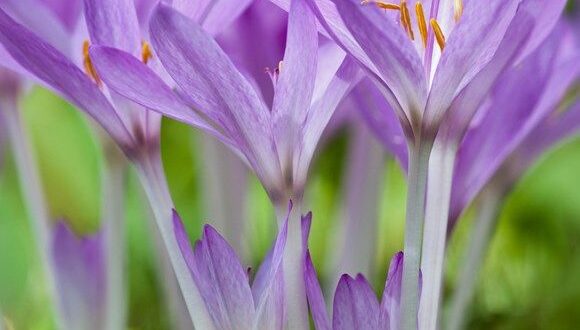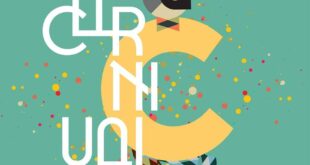Colchicines: The “weapon” against the coronavirus is found in the yolk that is also grown in Greece
Colchicine, the natural toxic substance that is the new “weapon” against the coronavirus, has been known since ancient times as a medicine but also a powerful poison. The ancient Greeks had found that the plant Colchicum autumnale, from which colchicine is produced was very useful in the treatment of gout and rheumatism, which is why they named it “the soul of the joints”. Theophrastus, a student of Aristotle, wrote about the poisonous action of colchicine, who in his work “On the History of Plants” describes it as a deadly poison with a delayed onset of action.
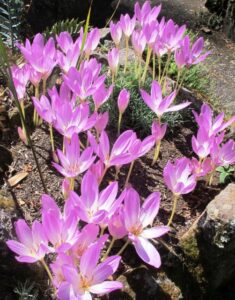
As Dr. Diamanto Lazari, a professor at the Pharmacognosy Laboratory of the Department of Pharmacy at the Aristotle University of Thessaloniki, explains to APE-MPE, the extract of the Colchicum autumnale plant was first described as a treatment for gout by Dioscouridis in his work “De Materica”. Autumn crocus is one of the 700 medicinal plants described in the oldest medical text, the Ebers papyrus of ancient Egypt (circa 1550 BC). It was used as a treatment for pain and swelling.
“However, initially the literature on plants containing colchicine refers mainly to their laxative and poisonous action as noted by Theophrastus (ca. 371-287 BC). Even today the toxic effects of colchicine are severe. “There is no antidote and overdose has a high mortality rate and is extremely dangerous in case of skin contact.”
According to Ms. Lazari, colchicine is a traditional medicine for the treatment of gout. It has been used to treat acute rheumatoid arthritis since 1810. Since the US Food and Drug Administration (FDA) approved colchicine as a drug for gout in 2009, there has been a resurgence of interest in research into colchicine applications.
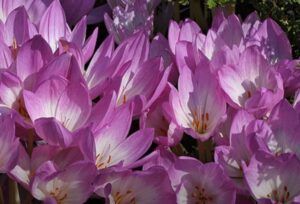
“It is obtained from the bulbs of Gloriosa superba of the same family (colchicine content of about 0.9%) and also from Colchicum autumnale (contained in the seeds, flowers and bulbs of the plant). Colchicum autumnale is spreading in Europe and Africa, while the species Gloriosa superba is spreading in Africa and Asia, including the hills of the Himalayas, Burma, Indonesia, Malaysia, etc.
Today, colchicine has an ever-expanding list of uses and remains, Ms. Lazari points out, “a basic treatment for gout and is also used to treat hereditary Mediterranean fever, pericarditis, Behcet’s disease, and atrial fibrillation.” At the same time, recent research makes it very promising for the treatment of a wide variety of cardiovascular disorders.
Wide distribution of the plant Colchicum autumnale in Greece
Evidence for the autumn yolk Colchicum autumnale, a native species of Greece, and one of the plants that could be utilized for colchicine since it contains one of the highest concentrations, is given to APE-MPE by Dr. Eleni Maloupa, director of the Institute of Genetic Improvement and F Resources – Hellenic Agricultural Organization “Dimitra” and head of the Balkan Botanical Garden of Kroussia.
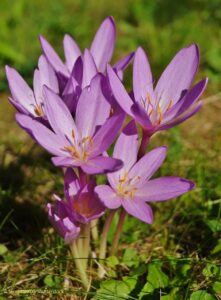
“The genus Colchicum includes about 60 species. The autumn crocus -Colchicum autumnale- is found in wet mountain meadows and pastures, on shady stony slopes with deep fertile soil, at an altitude of 1400 to 2000 meters in many parts of Greece and Europe. It is widespread, in Greece about 30 species have been recorded and is found in Thrace, in Northern Central and Eastern Greece, in North and South Pindos, in the mountains Katara, Orvilos, Rodopi, Tymfi and Falakro “. The flower of the colchicum resembles that of the crocus and blooms from late July to October.
“According to Pharmacopoeia, the Colchis has been known since ancient times. Dioskourides mentions a “poisonous” Colchian from the Black Sea. The ancient Greeks had found that Colchicum autumnale was very useful for the treatment of gout and rheumatism, which is why they called it “the soul of the joints,” says Ms. Maloupa. Asked what the consumption of such plants can bring to the body, she clarified that “even 2 or 3 seeds of Colchicum autumnale can cause death.”
“But as a drug, if administered in small, carefully controlled doses, it is effective as a painkiller and anti-inflammatory and its pharmacological form is still in use for the treatment of gout and other rheumatic diseases. In addition, the homeopathic preparation Colchicum is made from fresh Colchicum autumnale bulbs “concludes Ms. Maloupa
Source:- https://www.newsit.gr/
 Zakynthos Informer Zakynthos Informer
Zakynthos Informer Zakynthos Informer

